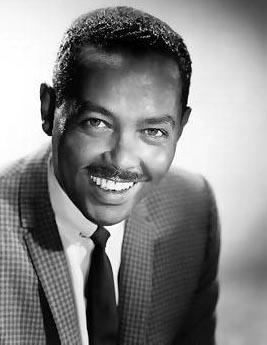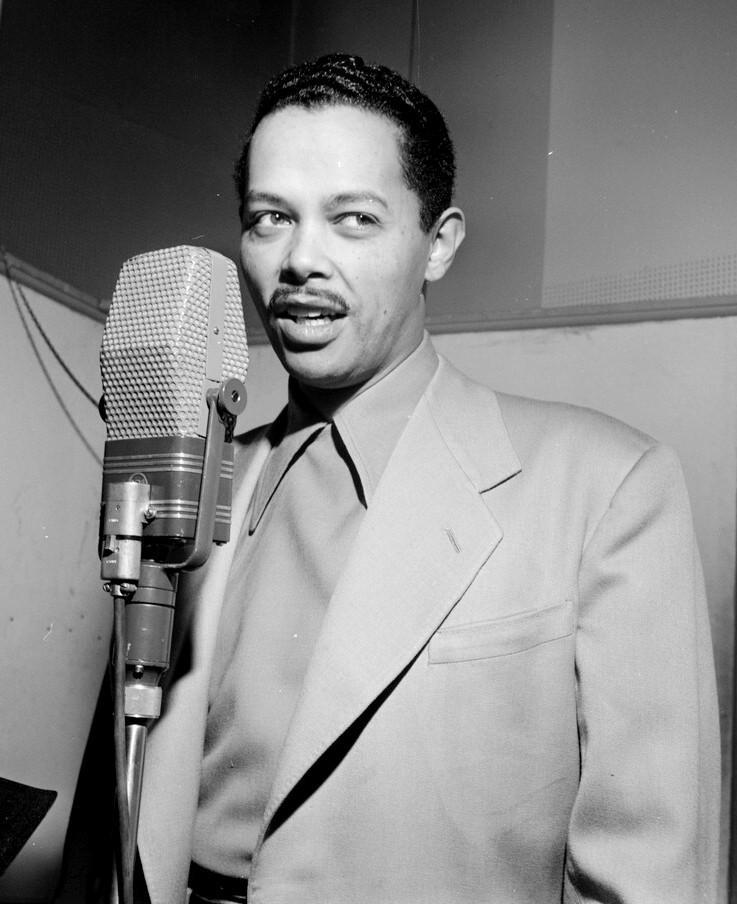Billy Eckstine (William Clarence Eckstine)

Billy Eckstine’s paternal grandparents were William F. Eckstein and Nannie Eckstein, a mixed-race, married couple who lived in Washington, D.C.; both were born in 1863. William F. was born in Prussia and Nannie in Virginia. His parents were William Eckstein, a chauffeur, and Charlotte Eckstein, a seamstress of note. Eckstine was born in Pittsburgh, Pennsylvania; a State Historical Marker is placed at 5913 Bryant St, Highland Park, Pittsburgh, Pennsylvania, to mark the house where he grew up. Billy’s sister, Maxine (married name Whedbee), was a well-respected Spanish teacher at Taylor Allderdice High School in Pittsburgh. He attended Peabody High School before moving to Washington, DC. He attended Armstrong High School, St. Paul Normal and Industrial School, and Howard University. He left Howard in 1933, after winning first place in an amateur talent contest. He married his first wife, June, in 1942. After their divorce in 1952, he remarried shortly after to actress and model Carolle Drake in 1953, and they remained married until his death. He was the father of four children by second marriage and two step-children, including Ed Eckstine, who was a president of Mercury Records, Guy Eckstine, who was a Columbia and Verve Records A&R executive and record producer, singer Gina Eckstine, and actor Ronnie Eckstine. Heading to Chicago, Billy Eckstine joined Earl Hines’ Grand Terrace Orchestra in 1939, staying with the band as vocalist and trumpeter, until 1943. By that time, Eckstine had begun to make a name for himself through the Hines band’s juke-box hits as “Stormy Monday Blues” and his own “Jelly Jelly.”
In 1944, Billy Eckstine formed his own big band and it became the finishing school for adventurous young musicians who would shape the future of jazz. Included in this group were Dizzy Gillespie, Dexter Gordon, Miles Davis, Art Blakey, Charlie Parker, and Fats Navarro, as well as vocalist Sarah Vaughan. Tadd Dameron, Gil Fuller and Jerry Valentine were among the band’s arrangers. The Billy Eckstine Orchestra is considered to be the first bop big-band, and had Top Ten chart entries that included “A Cottage for Sale” and “Prisoner of Love”. Both were awarded a gold disc by the RIAA. Dizzy Gillespie, in reflecting on the band in his 1979 autobiography To Be or Not to Bop, gives this perspective: “There was no band that sounded like Billy Eckstine’s. Our attack was strong, and we were playing bebop, the modern style. No other band like this one existed in the world.” Eckstine became a solo performer in 1947, with records featuring lush sophisticated orchestrations. Even before folding his band, Eckstine had recorded solo to support it, scoring two million-sellers in 1945 with “Cottage for Sale” and a revival of “Prisoner of Love”. Far more successful than his band recordings, these prefigured Eckstine’s future career. Eckstine would go on to record over a dozen hits during the late 1940s. He signed with the newly established MGM Records, and had immediate hits with revivals of “Everything I Have Is Yours” (1947), Richard Rodgers and Lorenz Hart’s “Blue Moon” (1948), and Juan Tizol’s “Caravan” (1949). Billy Eckstine had further success in 1950 with Victor Young’s theme song to “My Foolish Heart,” and the next year with a revival of the 1931 Bing Crosby hit, “I Apologize”. His 1950 appearance at the Paramount Theatre in New York City drew a larger audience than Frank Sinatra at his Paramount performance.
Billy Eckstine was the subject of a three page profile in the 25 April 1950 issue of LIFE magazine, in which the photographer Martha Holmes accompanied Eckstine and his entourage during a week in New York City. One photograph taken by Holmes and published in LIFE showed Eckstine with a group of female admirers, one of whom had her hand on his shoulder and her head on his chest while she laughed. Eckstine’s biographer Cary Ginell, wrote of the image that Holmes “…captured a moment of shared exuberance, joy, and affection, unblemished by racial tension.” Holmes would later describe the photograph as the favorite of the many she had taken in her career as it “…told just what the world should be like”. The photograph was considered so controversial that an editor at LIFE sought personal approval from Henry Luce, the magazine’s publisher, who said it should be published. The publication of the image caused letters of protest to be written to the magazine, and singer Harry Belafonte subsequently said of the publication that “When that photo hit, in this national publication, it was if a barrier had been broken”. The controversy that resulted from the photograph had a seminal effect on the trajectory of Eckstine’s career. Tony Bennett would recall that “It changed everything…Before that, he had a tremendous following…and it just offended the white community”, a sentiment shared by pianist Billy Taylor who said that the “coverage and that picture just slammed the door shut for him”.
Among Eckstine’s recordings of the 1950s was a 1957 duet with Sarah Vaughan, “Passing Strangers”, a minor hit in 1957, but an initial No. 22 success in the UK Singles Chart. The 1960 Las Vegas live album, No Cover, No Minimum, featured Eckstine taking a few trumpet solos and showcased his nightclub act. He recorded albums for Mercury and Roulette in the early 1960s, and appeared on Motown albums during the mid to late 1960s. After recording sparingly during the 1970s for Al Bell’s Stax/Enterprise imprint, the international touring Eckstine made his last recording, the Grammy-nominated Billy Eckstine Sings with Benny Carter in 1986. Billy Eckstine made numerous appearances on television variety shows, including on The Ed Sullivan Show, The Nat King Cole Show, The Tonight Show with Steve Allen, Jack Paar, and Johnny Carson, The Merv Griffin Show, The Art Linkletter Show, The Joey Bishop Show, The Dean Martin Show, The Flip Wilson Show, and Playboy After Dark. He also performed as an actor in the TV sitcom Sanford and Son, and in such films as Skirts Ahoy, Let’s Do It Again, and Jo Jo Dancer. Culturally Eckstine was a fashion icon. He was famous for his “Mr. B. Collar”- a high roll collar that formed a “B” over a Windsor-knotted tie. The collars were worn by many a hipster in the late 1940s and early 1950s. In 1984 Eckstine recorded his penultimate album, I Am a Singer, arranged and conducted by Angelo DiPippo and featuring Toots Thielemans on harmonica. In November 1986, Eckstine recorded with saxophonist Benny Carter for his 1987 album Billy Eckstine Sings with Benny Carter. Billy Eckstine made his final recordings for Motorcity Records, a label for ex-Motown artists founded by Ian Levine. Billy Eckstine suffered a stroke while performing in Salina, Kansas, in April 1992, and never performed again. Though his speech improved in hospital, Eckstine later had a heart attack, and died a few months later on March 8, 1993, aged 78. Eckstine’s final word was “Basie”.
Born
- July, 08, 1914
- USA
- Pittsburgh, Pennsylvania
Died
- March, 08, 1993
- USA
- Pittsburgh, Pennsylvania
Cause of Death
- heart attack
Other
- Cremated



